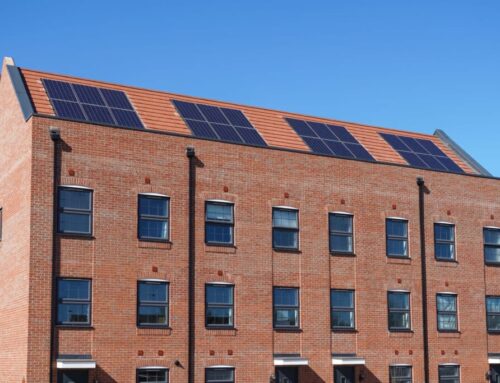Darren Bagnall from Block in a Box discusses the mental health benefits of green spaces in blocks of flats and apartments and how you can create or enhance these spaces.
In the bustling concrete jungles of urban landscapes, amidst the towering blocks of flats and office buildings, lies an often-overlooked treasure – green spaces. These pockets of nature, whether parks, gardens or even small community planters are not just aesthetically pleasing; they play a pivotal role in enhancing residential mental well-being.
Exploring the impact of green spaces within blocks of flats and apartments unveils a significant correlation between access to nature and improved mental health, while highlighting the repercussions of their absence.
The Mental Health Benefits of Green Spaces
Research consistently proves the positive influence of green spaces on mental well-being. Access to nature has been linked to reduced stress levels, alleviation of symptoms associated with anxiety and depression and an enhanced overall psychological resilience. Individuals residing in environments with ample greenery report greater satisfaction with their living conditions and are more likely to experience a sense of tranquillity amidst the urban hustle.
Green spaces within blocks of flats and apartments offer residents a retreat from the pressures of city life providing enhanced assistant for relaxation and reflection. Whether it is a rooftop garden, communal courtyard or landscaped terrace – these spaces facilitate opportunities for social interaction, physical activity and a chance to be within nature. Engaging in activities such as gardening, leisurely strolls or simply basking in the sunlight can promote mindfulness, reduce rumination and uplift mood.
Drawbacks of Green Space Absence in Urban Dwellings
On the flip side, not having green spaces in close proximity to blocks of flats and apartments can profoundly impact the mental well-being of residents. The scarcity of green areas deprives individuals of essential opportunities for unwinding, engaging in outdoor activities and interacting with neighbours resulting in a decrease in mental resilience and maybe even overall contentment with ones living situation.
Furthermore, the lack of green spaces within residential complexes may contribute to a sense of social fragmentation and decreased community cohesion. Without communal areas for residents to gather and interact, the sense of belonging and support within the community may diminish increasing feelings of loneliness.
Suggestions for Creating and Enhancing Green Spaces
To enhance residents’ well-being in blocks of flats and apartments, it is imperative to prioritise the creation and enhancement of green spaces within these urban dwellings. Here are some suggestions for achieving this:
- Rooftop Gardens: Utilise the rooftops of residential buildings to create vibrant rooftop gardens featuring a variety of plants, seating areas, and recreational amenities. Rooftop gardens not only maximise green space in densely populated areas but also offer panoramic views of the cityscape fostering a sense of tranquillity and connection with nature.
- Communal Courtyards: Transform underutilised areas within residential complexes into inviting communal courtyards adorned with greenery, walking paths and seating alcoves. Communal courtyards serve as focal points for social interaction and community engagement fostering a sense of belonging and camaraderie among residents.
- Vertical Gardens: Install vertical gardens on the exterior walls of apartment buildings to introduce greenery and biodiversity into urban landscapes. Vertical gardens not only enhance the aesthetic appeal of buildings but also improve air quality, reduce noise pollution and provide habitat for birds and insects.
- Indoor Green Spaces: Integrate indoor green spaces such as atriums, indoor gardens or plant-filled common areas into the design of residential complexes. Indoor green spaces not only purify the air and enhance the indoor environment but also create inviting spaces for relaxation and socialisation during inclement weather.
- Community Gardens: Establish community gardens within residential complexes to provide residents with opportunities for urban agriculture, gardening and outdoor recreation. Community gardens promote sustainable living practices, foster a sense of stewardship for the environment, and encourage social interaction and collaboration among residents.
Conclusion
In conclusion, green spaces within blocks of flats and apartments play a pivotal role in enhancing residents’ mental well-being and quality of life. By prioritising the creation and enhancement of green spaces within urban dwellings property managers can create healthier and more liveable environments that nurture the body, mind and spirit.







Leave A Comment